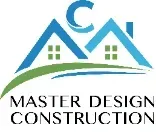
Ergonomic Kitchen Designs for All Abilities | Comfortable & Accessible
What Are Ergonomic Kitchen Designs for All Abilities and Why Do They Matter?
Designing a kitchen that caters to diverse needs is more than just a trend—it's an essential step toward creating an inclusive, functional space for everyone. Ergonomic kitchen designs for all abilities emphasize accessibility, safety, comfort, and efficiency, ensuring that whether you're young, elderly, or have mobility challenges, your kitchen becomes a welcoming environment. These designs promote independence and empower users to perform cooking routines with ease and confidence.
By integrating ergonomic principles, homeowners can enjoy a space that reduces strain, prevents injuries, and enhances overall usability. From adjustable countertops to intuitive storage solutions, these kitchens redefine what accessibility truly means in modern homes.
What Are the Key Features of Ergonomic Kitchen Designs for All Abilities?
- Accessible Layouts: Open floor plans with sufficient maneuvering space to accommodate wheelchairs or walkers.
- Ergonomic Work Surfaces: Adjustable countertops, pull-out shelves, and angled workstations minimize reaching and bending.
- Smart Storage Solutions: Lowered cabinets, easy-to-reach drawers, and organize gadgets to reduce clutter and strain.
- Adaptive Appliances: Touch-activated stovetops, under-mount sinks, and ergonomic handles designed for comfort and safety.
- Proper Lighting: Bright, glare-free lighting reduces eye strain and enhances visibility for all users.
- Non-slip Flooring: Ensures safety, especially for those with balance issues or slip concerns.
How Can You Customize an Ergonomic Kitchen to Meet Different Needs?
Customization is the cornerstone of effective ergonomic kitchen designs for all abilities. Here’s how you can tailor your kitchen to your specific needs:
- Assess Your Space and Users: Consider the mobility levels, height preferences, and specific tasks of everyone who will use the kitchen.
- Incorporate Adjustable Features: Use adjustable-height countertops, movable islands, or ergonomic stools for versatility.
- Choose Universal Design Elements: Select appliances and fixtures with universal appeal, ensuring they are easy to operate for all users.
- Prioritize Safety Measures: Install grab bars, anti-scald valves, and fire safety features to ensure a secure environment.
Partnering with professionals like Master Design Construction and Roofing can help you implement these features seamlessly, creating a kitchen that genuinely fits all abilities.
What Are the Benefits of Implementing Inclusive and Dynamic Kitchen Designs?
Beyond aesthetic appeal, inclusive ergonomic kitchens offer numerous advantages:
- Enhanced Safety: Minimized risk of accidents and injuries due to well-thought-out features.
- Increased Independence: Users can perform tasks without external assistance, fostering self-sufficiency.
- Future-Proof Your Home: Adaptable designs that can evolve with changing needs or health conditions.
- Better Functionality: Optimized workflows that make cooking and cleaning more efficient and enjoyable.
- Boosted Home Value: Adding accessible features can significantly increase your property’s appeal and marketability.
Learn more about professional remodeling services that prioritize inclusive designs and innovative solutions for active, accessible living.
How Do You Get Started with Designing an Ergonomic Kitchen for All Abilities?
Embarking on a kitchen transformation begins with strategic planning and expert consultation:
- Identify Your Needs: List the essential features and adaptations for your lifestyle.
- Consult with Experts: Work with experienced designers and contractors familiar with inclusive kitchen layouts.
- Develop a Design Plan: Incorporate ergonomic principles and universal design standards tailored to your home.
- Choose Quality Materials and Fixtures: Opt for durable, low-maintenance, and safety-enhancing options.
- Implement Gradually: Prioritize the most critical changes and expand as needed over time.
Start your journey today by exploring comprehensive kitchen remodeling services that focus on creating accessible, ergonomic spaces for all abilities.
Can I Incorporate Modern Technology into My Ergonomic Kitchen Design?
Absolutely! Smart technology integration elevates the functionality and convenience of accessible kitchens. Features like voice-activated faucets, smart lighting systems, and app-controlled appliances streamline cooking routines and enhance safety. These innovations make the kitchen not just accessible but also cutting-edge, ensuring longevity and ease of use for years to come.
For assistance with modern upgrades, consider consulting with specialists who understand the latest trends in home automation and ergonomic design.
What Are Common Mistakes to Avoid When Planning Ergonomic Kitchen Designs for All Abilities?
- Overlooking Space Constraints: Not allowing enough clearance can hinder movement and accessibility. Always plan for ample turning radius and clearance zones.
- Ignoring User Feedback: Failing to involve the actual users leads to designs that don’t meet real needs or comfort levels.
- Using Inappropriate Materials: Low-quality or unsuitable materials can compromise safety or durability.
- Neglecting Lighting and Ventilation: Poor lighting or inadequate ventilation can reduce safety and usability.
- Failing to Plan for Future Changes: Not incorporating adaptable features might require costly renovations later.
Partner with experienced professionals to avoid these pitfalls and ensure your project aligns with your goals.
Frequently Asked Questions (FAQs)
What makes a kitchen accessible for people with mobility issues?
An accessible kitchen features wide pathways, lower countertops, pull-out shelves, lever-style handles, and easy-to-reach appliances, all designed to accommodate wheelchairs and reduce strain.
How much does a kitchen remodel focused on ergonomic designs typically cost?
While costs vary based on scope and materials, investing in ergonomic features ensures long-term usability and safety. Consulting with specialists can help determine the best solutions within your budget.
Can ergonomic kitchen designs be incorporated into existing homes or only during new construction?
They can be integrated into both new builds and remodels. Many existing kitchens can be modified with accessible features, making improvements feasible and cost-effective.
How long does it take to complete an ergonomic kitchen remodel?
Project duration depends on the complexity and extent of modifications. Working with an experienced team ensures efficient planning and timely execution.
Why Choose Master Design Construction and Roofing—Rancho Cucamonga?
With years of expertise in remodeling and construction, Master Design Construction and Roofing is committed to delivering custom solutions that prioritize accessibility and functionality. Whether you're refurbishing an existing kitchen or designing a brand-new space, our professionals employ cutting-edge techniques and materials to bring your vision to life. From cabinetry to flooring, we focus on creating ergonomic, adaptable environments that serve all abilities.
Conclusion: Embrace the Future of Inclusive Kitchen Design Today
A thoughtfully designed, ergonomic kitchen for all abilities transforms the way you experience cooking and daily routines. By prioritizing accessibility, safety, and efficiency, you create a space that welcomes everyone and adapts to evolving needs. Whether you're planning a complete renovation or minor upgrades, professional guidance ensures your project aligns with current standards and best practices.
Ready to revolutionize your home? Contact us to discover how our expert services can help you craft a kitchen that’s not just stylish but also inclusive and functional. Empower yourself with an ergonomic kitchen tailored to your life—because everyone deserves a space they love to cook and share in.


























